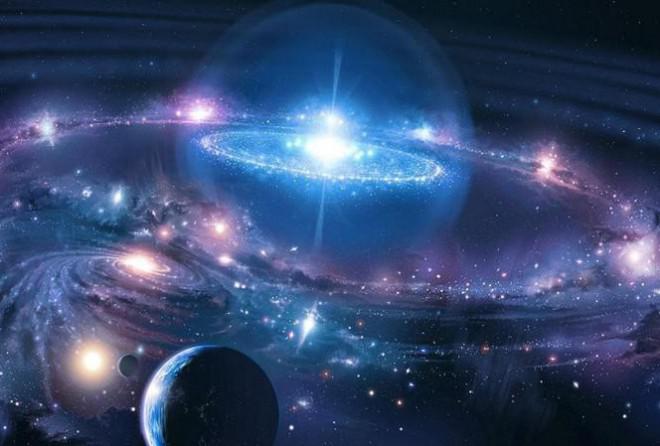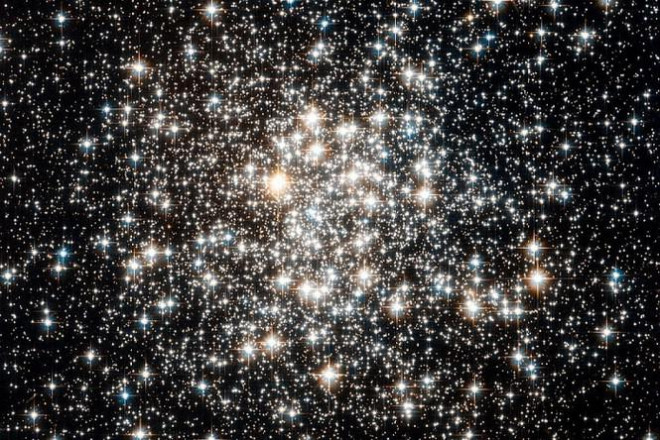In the universe there are countless stars, much more massive and brighter than the sun. The question is: how do they form and how long do they last?
Stars always form in galaxies. In galaxies, there are many clouds of very porous gas and dust. These clouds are called nebulae.
Gravity creates lumps in these porous clouds – like raisins in a cake. When one of these pieces starts to become solid, firmer and more rigid, then their density increases. Density indicates the degree to which an object is dense, hard, and has a strong adhesion.
The core of these solid gas clusters also gets hotter and hotter, and when a certain temperature (millions of degrees) is reached, something very special begins to happen within it. These are the hydrogen atoms that combine to form helium.
(You probably already know that atoms are the tiny parts that make up all things. All gas and dust in the universe, and even ourselves, are made up of atoms that combine to make everything.).
When the hydrogen atoms combine to form helium, a fusion reaction occurs and a lot of energy is generated. When hydrogen atoms combine to form helium, nuclear fusion occurs, also called a fusion reaction. This process releases a lot of energy, and that’s when a star is born.
The life and death of a star
Like us, stars are born, live and die. The lifespan of a star depends on its mass at birth. Little bright stars live incredibly long.

Our sun is also a star. So far, the sun has been around for about 4.5 billion years and is now in the middle of its entire life. Over the next 5 billion years, the sun will get bigger and bigger, but then it will start to fade and die. His nuclear power would stop and he would just sit there, cool, like a lump of coal in the burnt kitchen.
Stars heavier than our Sun have a much shorter lifespan. The heaviest stars only live a million years, but their death is more beautiful, much better than the silent and gradual death of our solar stars. They died with a giant explosion and scientists call this phenomenon a supernova.
Is man created from star dust?
Have you ever heard people say “we were born of dust”? It’s real! Inside a star, helium atoms combine to produce carbon, carbon is the source of the chemicals that make up our bodies and all life on Earth.
There is still a lot that we don’t fully understand about the mysterious life of the stars. Fortunately, we have extremely large telescopes and satellites in space to collect ever clearer images of the stars.
Interesting things about the stars
Brightness
Each star visible to the human eye in the sky is several times larger and brighter than the Sun. Of the 50 or so brightest stars visible to human eyes on Earth, the faintest is Alpha Centauri. However, it is still 1.5 times brighter than the Sun and cannot be easily seen in the Northern Hemisphere.
Number observed at night
On nights without a moon or any other source of light around, a person with good eyesight sees about 2000 to 2500 stars at a time. So if someone says they see millions of stars in the sky, that’s just an exaggeration.
Color
In fact, a star changes color when its temperature changes. The color red represents the lowest temperature at which the star can shine in the visible spectrum. Hotter stars emit white light, blue stars have the hottest temperature.
The stars are black objects
A black body is an object that absorbs 100% of all electromagnetic radiation (light, radio waves …) when it is illuminated. In the case of a star, it absorbs all of the incoming radiation energy, while emitting more radiation into space than it is absorbed. Therefore, these are black bodies that emit strong light. A black body is more perfect than a black hole, but it looks really black and does not emit light.

There are no green stars
Green in any star cannot be observed by astronomers, except for the optical effect of the telescope, or the observer’s field of view and the degree of contrast. The star emits a green spectrum, but the human eye-brain connection mixes colors in a way that rarely produces green. It is mixed with other colors and the star appears white. Common colors in the range of low to high temperature are red, orange, yellow, white, and blue.
The color of the sun.
The sun has a surface temperature of over 5800 degrees C, which corresponds to a cyanotic wavelength (approximately 500 nanometers). However, when the human eye observes the colors, the Sun now appears white or even a slightly yellowish white color.
The sun is a dwarf star
Stars that generate energy by holding and fusing hydrogen include dwarfs, large stars, and supermasses. Large supermassive stars represent the terminal stage of a star, while most small stars are in an evolutionary maturity called dwarf stars. The Sun is a dwarf star, sometimes called a “yellow dwarf”.
The star did not blink
The stars seem to sparkle brilliantly, especially when they appear near the horizon. When a star’s light shines through Earth’s turbulent atmosphere, it has to penetrate many different layers of air, so that it changes color and intensity, making it appear as if they sparkle. This phenomenon does not occur if we observe the star above the Earth’s atmosphere.
Interval
On a clear night, we can see the star Deneb in the constellation Cygnus, about 32 million billion km away. It is the most visible star in the sky on fall and winter nights anywhere in the northern hemisphere.
A recent study found that the first stars in the universe could be gigantic in size, but not as bright as stars today. It is actually called a “dark star” and is formed by the destruction of dark matter. “Dark” stars also contain common substances in the form of hydrogen and helium molecules, but they are typically about 400 to 200,000 times larger than other stars and “more porous” than others. exist even if they do not emit ordinary light rays, but rather gamma rays, neutrinos, and antimatter like positron and antipositron. People cannot see “dark stars” with the naked eye, but the radiance of the stars It brings terrible heat.


